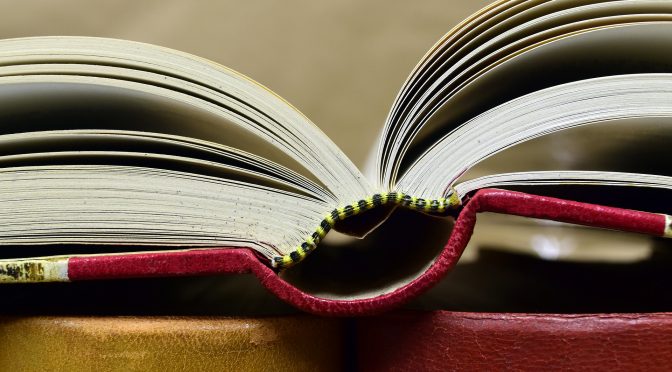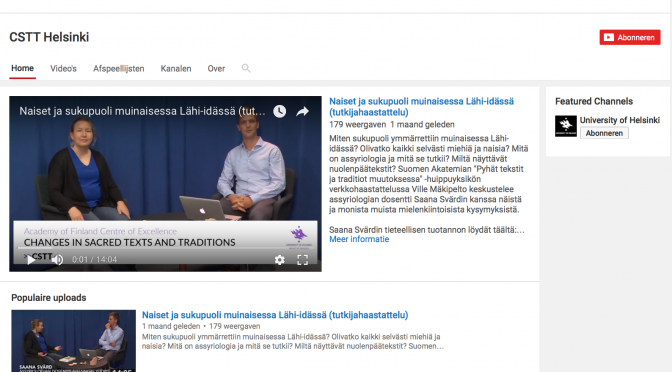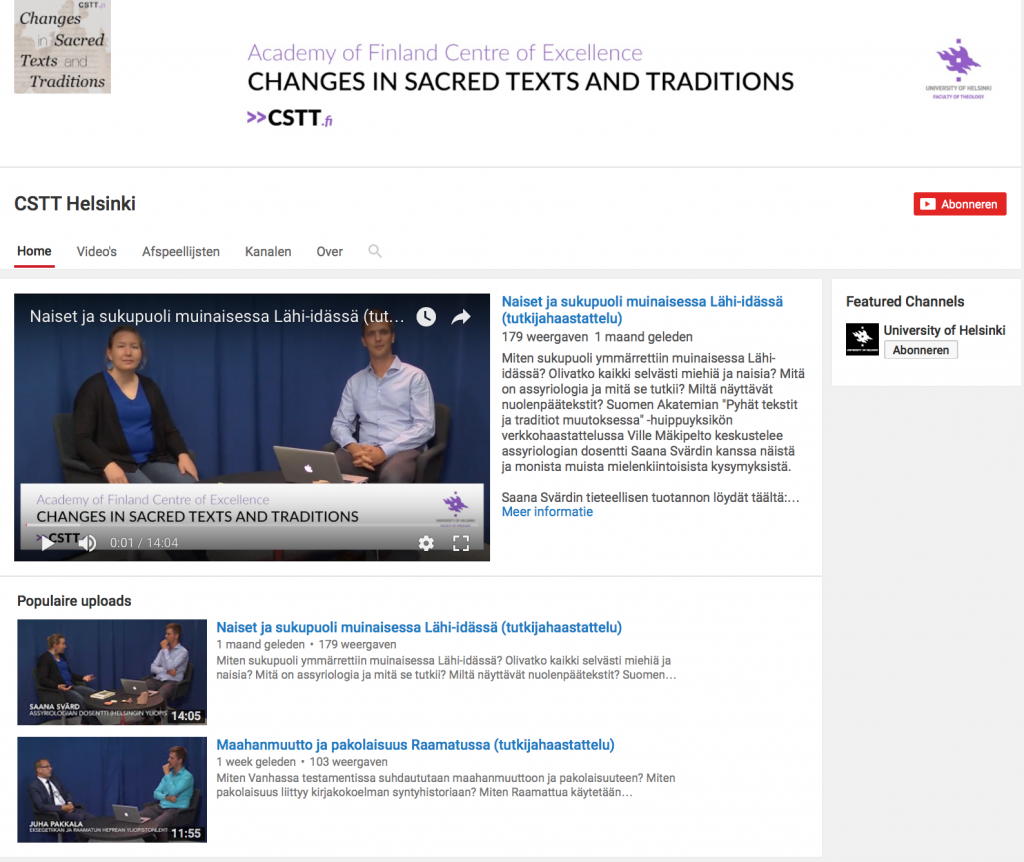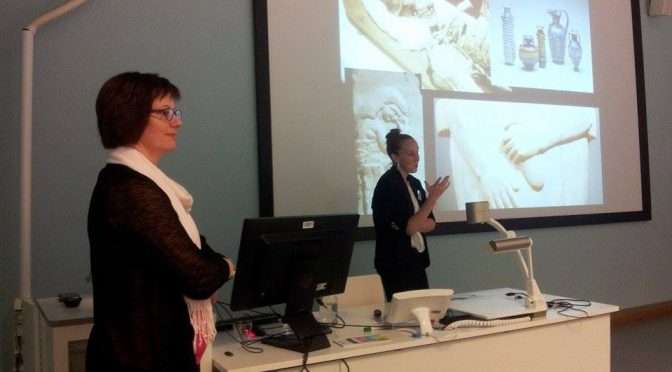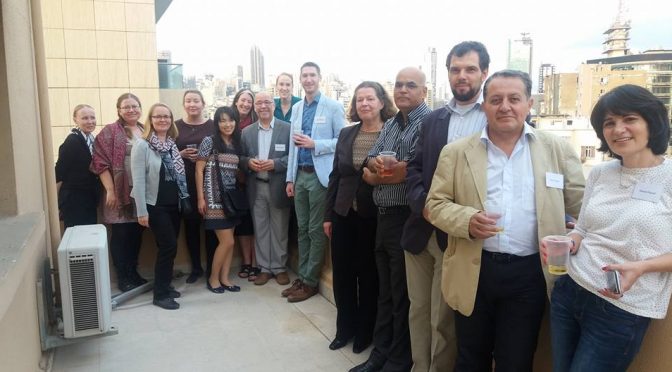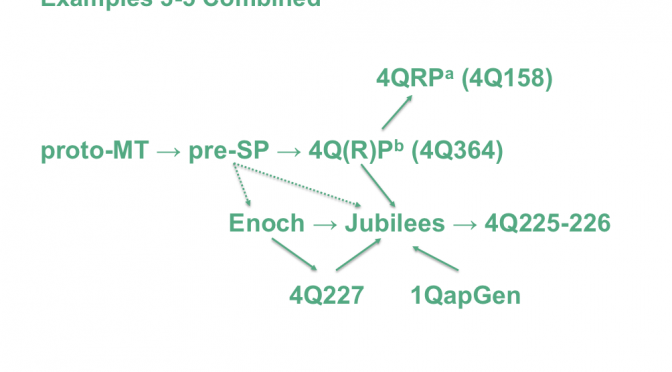The following is the text of our policy regarding work with unprovenanced antiquities. The matter is so important that we decided to publish the policy also as a blogpost.
I. Preamble
The CSTT deplores the looting of archaeological sites, the undocumented removal of material from its context, and the illicit trade in antiquities and cultural objects. It also disapproves of the illicit falsification of antiquities and related documentation, which is something that is closely associated with the vast trade in unprovenanced antiquities. The object of this policy is to establish standards of conduct for the members of the CSTT to follow in fulfilling their responsibilities to prevent the above issues. This policy applies to all members and associate members of the CSTT
II. Policy
The CSTT acknowledges its support of the various international treaties, such as the 1954 Hague Convention, the 1970 UNESCO Convention, and the 1995 UNIDROIT Convention, and Finnish national laws intended to stop and prevent the illicit antiquities trade. Since scholars act as stewards of our common cultural heritage, the CSTT encourages its members to familiarize themselves with these treaties and laws, as they form the cornerstone of this policy and that of other professional organizations, such as the Society of Biblical Literature, the American Schools of Oriental Research, or the European Association of Archaeologists. More specifically, the CSTT endorses the guidelines as laid out in the Policy on Professional Conduct of the American Schools of Oriental Research (henceforth ASOR). The ASOR Policy is, since 2017, also adopted by the Society of Biblical Literature in their Policy on Scholarly Presentation and Publication of Ancient Artifacts.
The most important implications for the CSTT as a body, and its individual members and associate members, of supporting the ASOR Policy, follow below.
- The CSTT’s endorsement of the ASOR Policy implies that CSTT members and associate members refuse to participate in the trade in unprovenanced antiquities and refrain from activities that enhance the commercial value of such objects, such as publication, authentication, and/or exhibition. Unprovenanced antiquities are those which are not documented as belonging to a public or private collection before April 24, 1972, which is the date of entry into force of the 1970 UNESCO Convention, or which have not been excavated and exported from the country of origin in accordance with the laws of that country (see, e.g., Section III, part B, notes 4 and 10).
- CSTT members and associate members should exercise due diligence when confronted with an unknown artefact, manuscript, or other object in determining the provenance, collection history, and legality of that object.
- It is the responsibility of CSTT members and associate members to draw the attention of the responsible authorities to threats to, or plunder of archaeological sites, and illegal import or export of antiquities, as well as upon encountering suspect materials (see, e.g., Section III, part B, note 9).
In terms of research and publication, Section III, part E of the ASOR Policy lays out the main principles to which CSTT members and associate members should adhere.
- This means that the CSTT discourages its members and associate members from taking part in the initial publication or announcement of any object acquired by an individual or institution after April 24, 1972, which is the date of entry into force of the 1970 UNESCO Convention, or which have not been excavated and exported from the country of origin in accordance with the laws of that country.
- In publications and presentations, CSTT members and associate members should be transparent when introducing data of uncertain reliability or authenticity to the realm of public knowledge, particularly when research and publication involves artifacts that lack an archaeological findspot or that are illegally exported.
- CSTT members and associate members should also identify clearly any object that lacks an archaeological findspot in an appropriate manner in the text of the publication and the caption of its illustration.
- In case of publication projects started in good faith before this CSTT Policy and before the awareness of the issues connected with unprovenanced artefacts had come up in general discussion, the members of the CSTT are expected to do their best to clear the background of the object in question, and decide for their own part whether or not to finish their project and publish the artefact in question.

